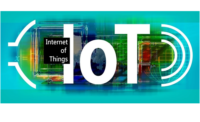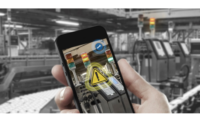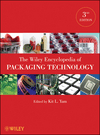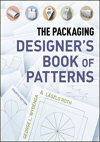Technology: Printed Electronics
Electronic Packaging, Smart Labels, the Internet of Things & the Manufacturing Paradigm








Electronic packaging has become part of the lexicon in the traditional packaging and label space. The drivers are apparent. The consumer brand groups benefit because electronics add a level of functionality which can enhance the consumer experience and provide valuable metrics. The attraction for suppliers is equally apparent – the volumes and demand for electronic functions at the item level are huge in comparison to traditional markets for electronics.
Yet, for all of the rhetoric and publicity around “electronic packaging” and “smart labels,” there is a fundamental disconnect. Electronic manufacturing, which occupies its own ecosystem, is not naturally part of the brand or packaging manufacturing infrastructure.
The CPGs and manufacturing infrastructure that support the CPGs, namely the converter base, is largely separate from the traditional electronics environment. This disconnect will require a paradigm shift within the traditional manufacturing infrastructures for both worlds and an emphasis on supporting the converter and CPG groups.
Electronic packaging and smart labels will logically be produced by packaging and label converters. This paradigm shift will be a requirement if a significant adoption of electronics is realized at the consumer packaging level. The adoption of electronic functionality, even at a small percentage of consumer-based packaging, would represent a seismic shift in how, and more importantly where, these devices would be produced and how they would be marketed.
Manufacturing Methods in the Electronics Ecosystem
Manufacturers currently engaged in electronics employ a wide range of processes, many of which are largely based on printing. Conventional printed circuit board (PCB) manufacturing is largely based on subtractive processes where inks, such as an etch resist, are applied to copper clad boards, then imaged and ultimately progress through a series of wet chemistries.
PCB fabrication also includes printed materials, such as a soldermask, which expose areas of the PCB where discrete components are soldered onto it. Printed circuit board fabrication is an exception and will likely remain within its own environment.
However, vast numbers of electronic circuits are produced via fully printed processes. Many of these fully printed circuits are created via roll-to-roll and other high-speed presses, which can be found at many converters. The related processes can also be adopted by progressive minded converters.
Simple and complex circuits created by fully additive printing are commonplace. Processes include screen printing, roll-to-roll flexographic printing, dispensing and conformal coating.
Digital and aerosol jetting are emerging as leading printing processes for the 3D circuit market. 3D electronics are adopting nanosilver as a material of choice in many applications. Other printed electronic inks include printed conductors based on precious metals such as silver, which function as the electrical pathway; printed dielectrics, which act as an electrical insulator; printed resistors; printed lighting, such as OLED and electroluminescent lighting; and other components.
Printing is a common denominator between current methods for manufacturing smart labels and the current converter environment where everyday labels are made. These everyday labels are found on consumer products ranging from dry goods to food packaging and pharmaceuticals.
Therefore, the addition of electronics into this manufacturing environment is logical. Exploring the fundamental disconnects between the original equipment manufacturer (OEM)/electronic manufacturer and the brand/converter relationship is also interesting. When you consider the disconnect, it becomes rather compelling for the converter community to consider the adoption of electronic manufacturing into their facilities’ capabilities.
Converters have distinct advantages over the electronic manufacturer. The relationship between the electronic manufacturer and the OEM is largely driven by design dictated directly from the OEM to the original design manufacturer (ODM). The relationship between the OEM and traditional electronic manufacturers is almost purely specification driven.
The relationship between the CPG and the converter, on the other hand, offers many opportunities to interact with design and function. Together with ink suppliers, the CPG and converter already work in a collaborative manner. The relationship between the converter, ink supplier and CPG drives a three-way partnership which is beneficial to the converter and offers distinct opportunities for the converter to become more valuable to the CPG.
It can be argued that the natural separation between the CPG and traditional electronics manufacturers is one reason why electronic packaging has not gained more momentum.
Applications
Smart labels will very likely be the first platform to impact the adoption of traditional electronic manufacturing into everyday consumer products. Labels represent perhaps the easiest and most logical platform to build in electronic functionality.
Label converters or narrow web and tag manufacturers have the basic infrastructure to implement the adoption of printed electronics. Certain applications in which labels and label converters have adopted electronic functionality include NFC, RFID and blood glucose sensors.
By some estimates, smart labels, which incorporate some level of electronic function at the item level, can grow from a near standing start to more than $5 billion by 2020. This is not a great stretch when we consider the blood glucose test strip market is already worth $5 billion a year. Certainly hang tags and labels which interact with the consumer will likely be first.
Smart labels and packages that can gather metrics and provide important consumer data to brands will enhance that growth exponentially. However, it may take more time to gain a significantly higher adoption rate due to its complexity and backend infrastructure requirements.
Pricing
Price points and, more specifically, value-based pricing will also be critical for adoption. RFID and NFC are good examples of limited applications that can be fully printed. It can be argued that converters are more naturally in sync with brand owners and the cost justification for any type of innovation.
Production costs of electronic devices, even simple circuits, are increasingly driven by where they are manufactured. Much of the traditional electronic manufacturing market has moved to Asia.
This presents challenges to design interaction intimacy as well as logistics, and offers yet another advantage to converters over traditional electronic manufacturers. Converters naturally have a logistical advantage and inherent intimacy when it comes to design interaction with the CPG and inks suppliers.
Traditional electronic manufacturers will continue to struggle, not only with becoming part of the natural ecosystem that the CPG occupies, but also in adapting to the acceptance stream within brands. The adoption of any innovation within the brand is entirely dissimilar from the relationship between OEMs and electronic manufacturers.
Technology and Adoption
Technologies such as Touchcode from T+Sun, an organization created through a partnership between T+Ink and Sun Chemical, can now be adopted into the converter manufacturing environment. Touchcode only requires an extra one or two print stations to incorporate electronic functional ink into the design.
Once the electronic inks are printed, the four color graphic inks complete the package. Other technologies, including NFC and RFID, are more powerful and allow non-contact connections between the package and the smart device.
Lighting, especially OLED, can also be incorporated onto smart labels and packages, but this demands a higher degree of manufacturing complexity. Electroluminescent lighting (EL) is also a printed lighting solution that can be adapted to high-speed printing processes. However, converters will need to consider adopting simple assembly processes in order to be fully self-sufficient and offer a full range of manufacturing solutions.
Conclusion
Electronic packaging will include many applications where the device is printed directly on the package. However, printed sensors, which are the basis for smart labels, will print directly on labels and hang tags and will likely have the most significant initial impact.
Printed sensors will provide the physical interface and will be present in many forms, ranging from bio sensors to tags on everyday products. These functions will include printed memory to store data, printed antennae such as RFID and NFC to interface information, printed temperature, moisture detection to provide real time and historical data for perishable foods and pharmaceuticals and printed biosensors for providing an increasing range of diagnostics, including bio markers in the blood, sweat and tears.
Biosensors and RFID are examples of smart labels which have migrated to the printing ecosystems occupied by converters and label manufacturers. Materials ranging from silver and graphite conductors for bio test strips, printed reagents, conductive inks to create antennae, release coatings, adhesives and graphic inks are all printed.
Electronic packaging and smart labels will ultimately enhance the consumers experience and create brand loyalty. The converter, graphic inks suppliers and suppliers of electronic materials will play an important role and become valuable partners to the CPG. This team will be essential to driving the adoption of smart labels and electronic packaging.
These new smart devices will become a standard and CPGs will become increasingly invested in delivering these enhancements to the consumer. Therefore, it is logical that the manufacturing infrastructure that already supports the CPGs will prepare to reconfigure itself for the next generation of packaging.
Sun Chemical
(973) 404-6172
www.sunchemical.com
Looking for a reprint of this article?
From high-res PDFs to custom plaques, order your copy today!












